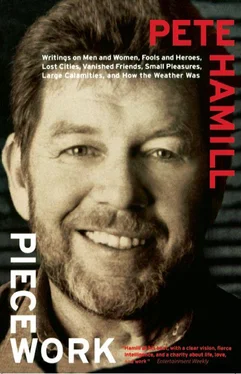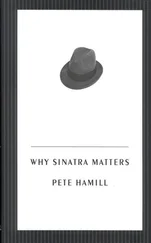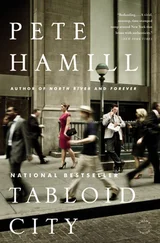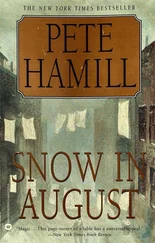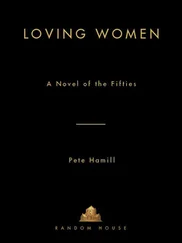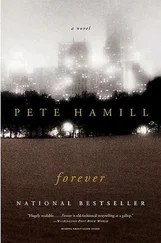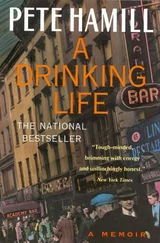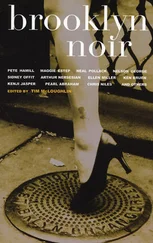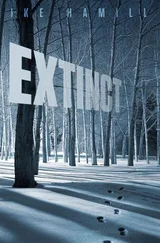Pete Hamill - Piecework
Здесь есть возможность читать онлайн «Pete Hamill - Piecework» весь текст электронной книги совершенно бесплатно (целиком полную версию без сокращений). В некоторых случаях можно слушать аудио, скачать через торрент в формате fb2 и присутствует краткое содержание. Год выпуска: 2009, ISBN: 2009, Издательство: Little, Brown and Company, Жанр: Современная проза, Публицистика, на английском языке. Описание произведения, (предисловие) а так же отзывы посетителей доступны на портале библиотеки ЛибКат.
- Название:Piecework
- Автор:
- Издательство:Little, Brown and Company
- Жанр:
- Год:2009
- ISBN:9780316082952
- Рейтинг книги:5 / 5. Голосов: 1
-
Избранное:Добавить в избранное
- Отзывы:
-
Ваша оценка:
- 100
- 1
- 2
- 3
- 4
- 5
Piecework: краткое содержание, описание и аннотация
Предлагаем к чтению аннотацию, описание, краткое содержание или предисловие (зависит от того, что написал сам автор книги «Piecework»). Если вы не нашли необходимую информацию о книге — напишите в комментариях, мы постараемся отыскать её.
offers sharp commentary on diverse subjects, such as American immigration policy toward Mexico, Mike Tyson, television, crack, Northern Ireland and Octavio Paz.
Piecework — читать онлайн бесплатно полную книгу (весь текст) целиком
Ниже представлен текст книги, разбитый по страницам. Система сохранения места последней прочитанной страницы, позволяет с удобством читать онлайн бесплатно книгу «Piecework», без необходимости каждый раз заново искать на чём Вы остановились. Поставьте закладку, и сможете в любой момент перейти на страницу, на которой закончили чтение.
Интервал:
Закладка:
TRAVEL HOLIDAY,
December 1992-January 1993
THE TORTILLA CURTAIN
You move through the hot, polluted Tijuana morning, past shops and gas stations and cantinas, past the tourist traps of the Avenida Revolution, past the egg-shaped Cultural Center and the new shopping malls and the government housing with bright patches of laundry hanging on balconies; then it’s through streets of painted adobe peeling in the sun, ball fields where kids play without gloves, and you see ahead and above you ten-thousand-odd shacks perched uneasily upon the Tijuana hills, and you glimpse the green road signs for the beaches as the immense luminous light of the Pacific brightens the sky. You turn, and alongside the road there’s a chain link fence. It’s ten feet high.
On the other side of the fence is the United States.
There are immense gashes in the fence, which was once called the Tortilla Curtain. You could drive three wide loads, side by side, through the tears in this pathetic curtain. On this morning, on both sides of the fence (more often called la linea by the locals), there are small groups of young Mexican men dressed in polyester shirts and worn shoes and faded jeans, and holding small bags. These are a few of the people who are changing the United States, members of a huge army of irregulars engaged in the largest, most successful invasion ever made of North America.
On this day, they smoke cigarettes. They make small jokes. They munch on tacos prepared by a flat-faced, pig-tailed Indian woman whose stand is parked by the roadside. They sip soda. And some of them gaze across the arid scrub and sandy chaparral at the blurred white buildings of the U.S. town of San Ysidro. They wait patiently and do not hide. And if you pull over, and buy a soda from the woman, and speak some Spanish, they will talk.
“I tried last night,” says the young man named Jeronimo Vasquez, who wears a Chicago Bears T-shirt under a denim jacket. “But it was too dangerous, too many helicopters last night, too much light…” He looks out at the open stretch of gnarled land, past the light towers, at the distant white buildings. “Maybe tonight we will go to Zapata Canyon…” He is from Oaxaca, he says, deep in the hungry Mexican south. He has been to the United States three times, working in the fields; it is now Tuesday, and he starts a job near Stockton on the following Monday, picker’s work arranged by his cousin. “I have much time. …”
Abruptly, he turns away to watch some action. Two young men are running across the dried scrub on the U.S. side, kicking up little clouds of white dust, while a Border Patrol car goes after them. The young men dodge, circle, running the broken field, and suddenly stand very still as the car draws close. They are immediately added to the cold statistics of border apprehensions. But they are really mere sacrifices; over on the left, three other men run low and hunched, like infantrymen in a fire fight. “Corre, corre,” Jeronimo Vasquez whispers. “Run, run.…” They do. And when they vanish into some distant scrub, he clenches a fist like a triumphant sports fan. He is not alone. All the others cheer, as does the woman selling tacos, and on the steep hill above the road, a man stands before a tar-paper shack, waves a Mexican flag, and shouts: “Goll” And everyone laughs.
We’ve all read articles about the 1,950-mile-long border between the United States and Mexico, seen documentaries, heard the bellowing rhetoric of the C-Span politicians enraged at the border’s weakness; but until you stand beside it, the border is an abstraction. Up close, you see immediately that the border is at once a concrete place with holes in the fence, and a game, a joke, an affront, a wish, a mere line etched by a draftsman on a map. No wonder George Bush gave up on interdiction as a tactic in the War on Drugs; there are literally hundreds of Ho Chi Minh trails leading into the United States from the south (and others from Canada, of course, and the sea). On some parts of the Mexican border there is one border patrolman for every twenty-six miles; it doesn’t require a smuggling genius to figure out how to get twenty tons of cocaine to a Los Angeles warehouse. To fill in the gaps, to guard all the other U.S. borders, would require millions of armed guards, many billions of dollars. And somehow, Jeronimo Vasquez would still appear on a Monday morning in Stockton.
Those young men beside the ruined fence — not the narcotraficantes — are the most typical members of the peaceful invasion. Nobody knows how many come across each year, although in 1988 920,000 were stopped, arrested, and sent back to Mexico by the border wardens. Thousands more make it. Some are described by the outnumbered and overwhelmed immigration police as OTMs (Other Than Mexican, which is to say, Salvadorans, Guatemalans, Nicaraguans, Costa Ricans fleeing the war zones, and South Americans and Asians fleeing poverty). Some, like Jeronimo Vasquez, are seasonal migrants; they come for a few months, earn money, and return to families in Mexico; others come to stay.
“When you see a woman crossing,” says Jeronimo Vasquez, “you know she’s going to stay. It means she has a husband on the other side, maybe even children. She’s not going back. Most of the women are from Salvador, not so many Mexicans. …”
Tijuana is one of their major staging grounds. In 1940 it was a town of seventeen thousand citizens, many of whom were employed in providing pleasure for visiting Americans. The clenched, bluenosed forces of American puritanism gave the town its function. In 1915 California banned horse racing; dance halls and prostitution were made illegal in 1917; and in 1920 Prohibition became the law of the land. So thousands of Americans began crossing the border to do what they could not do at home: shoot crap, bet on horses, get drunk, and get laid.
Movie stars came down from Hollywood with people to whom they weren’t married. Gangsters traveled from as far away as Chicago and New York. Women with money had abortions at the Paris Clinic. Sailors arrived from San Diego to lose their virgin status, get their first doses of the clap, and too often to spend nights in the Tijuana jail. The Casino of Agua Caliente was erected in 1928, a glorious architectural mixture of the Alhambra and a Florentine villa, complete with gambling, drinking, a nightclub, big bands, tennis, golf, a swimming pool, and fancy restaurants. Babe Ruth and Jack Dempsey were among the clients, and a Mexican teenager named Margarita Cansino did a dance act with her father in its nightclub before changing her name to Rita Hayworth. The casino was closed in 1935 by the Mexican president, and only one of its old towers still remains. But sin did not depart with the gamblers or the end of Prohibition. The town boomed during the war, and thousands of Americans still remember the bizarre sex shows and rampant prostitution of the era and the availability of something called marijuana. Today the run-down cantinas and whorehouses of the Zona Norte are like a living museum of Tijuana’s gaudy past.
“It’s very dangerous here for women,” Jeronimo Vasquez said. “The coyotes tell them they will take them across, for money. If they don’t have enough money, they talk them into becoming putas for a week or a month. And they never get out. …”
Although commercial sex and good marijuana are still available in Tijuana, sin, alas, is no longer the city’s major industry. Today the population is more than one million. City and suburbs are crowded with maquiladora plants, assembling foreign goods for export to the United States. These factories pay the highest wages in Mexico (although still quite low by U.S. standards) and attract workers from all over the republic. Among permanent residents, unemployment is very low.
Читать дальшеИнтервал:
Закладка:
Похожие книги на «Piecework»
Представляем Вашему вниманию похожие книги на «Piecework» списком для выбора. Мы отобрали схожую по названию и смыслу литературу в надежде предоставить читателям больше вариантов отыскать новые, интересные, ещё непрочитанные произведения.
Обсуждение, отзывы о книге «Piecework» и просто собственные мнения читателей. Оставьте ваши комментарии, напишите, что Вы думаете о произведении, его смысле или главных героях. Укажите что конкретно понравилось, а что нет, и почему Вы так считаете.
